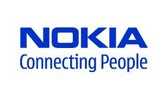e So following LaNetroZed’s acquisition of the majority of Monstermob earlier in the year, Buongiorno now played its part in consolidating the face of mobile D2C by acquiring I-Touch, the previously London-listed player (PDF press release here).
So following LaNetroZed’s acquisition of the majority of Monstermob earlier in the year, Buongiorno now played its part in consolidating the face of mobile D2C by acquiring I-Touch, the previously London-listed player (PDF press release here).
Of course, I-Touch had gone through an M&A spree of its own a couple of years back (it bought Spanish Movilisto and Finnish Jippii [meanwhile split up and perished]) before being gobbled up by Japanese giant For-side.com. Then of course all seemed to have gone a bit pair-shaped: when For-Side bought it, it cost a sweet £ 184m. Earlier this year, the management bought it out from its owner for allegedly $100m. Now, Buongiorno only had to pay about half that, namely €141m (incl. €12m in debt), which equals c. £ 95m or $190m. Someone did make money after all…
After the acquisition, the combined company apparently boasts more than 1,100 people in 20 countries and business in more than 40 countries.
What will this mean for the D2C sector? That with LaNetro and Buongiorno, there are now two more multi-national giants to compete with Jamba/Jamster? I wonder… All of these three had territories where they were/are strong and others where they weren’t/aren’t. The consolidation basically means that the offering will be less scattered and the players involved will stand a better chance to be recognised in the market, reducing volatility of their business.
Buongiorno is said to have been doing reasonably well in the more recent past: as per their last available quarterly report, revenues, EBITDA and profits were all up and rather healthily. But whilst they are amongst the big spenders in e.g. Italy or the US D2C markets, they were more or less absent from some other markets (the UK for instance). I-Touch and the markets it brings to the deal will help to strengthen their market position and they will be able to push their D2C model even harder now. The added footprint will allow them to get a better grip on pricing (which is something their board was sensitive about).
And here I was thinking that they were balancing it out with B2B, namely platform provision, master aggregation and, more recently marketing (Mitsui JV and acquisitions of Flytxt and HotSMS). But Buongiorno clearly has evolved with two equal columns to stand on. Congrats!
Update: Buongiorno CEO Andrea Casalini is certainly not shy: He said in the FT that they “had looked at other targets, including Jamba […] and […] LaNetro Zed, too.
 Nokia has agreed to buy ad-platform provider Enpocket for an undisclosed sum. The deal is expected to close later this year. This, coupled with Nokia’s recent announcements concerning Ovi, shows the Finnish giant’s push into other parts of the mobile content value chain.
Nokia has agreed to buy ad-platform provider Enpocket for an undisclosed sum. The deal is expected to close later this year. This, coupled with Nokia’s recent announcements concerning Ovi, shows the Finnish giant’s push into other parts of the mobile content value chain. Nokia’s CTO Tero Ojanperä highlighted just that: “Nokia has already announced its intention to be a leading company in consumer Internet services and we believe that mobile advertising will be an important element in monetizing those services for our customers and partners. […] This acquisition is a […] move to bring the reach and depth of Nokia to organize the market across the world, and make it easier for an ecosystem to develop.”
Nokia’s CTO Tero Ojanperä highlighted just that: “Nokia has already announced its intention to be a leading company in consumer Internet services and we believe that mobile advertising will be an important element in monetizing those services for our customers and partners. […] This acquisition is a […] move to bring the reach and depth of Nokia to organize the market across the world, and make it easier for an ecosystem to develop.”






